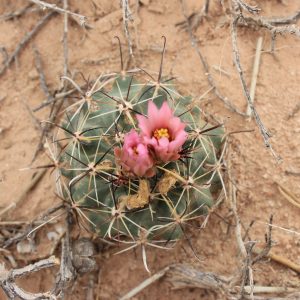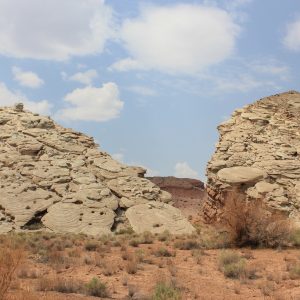In addtion to the valuable career experience gained through the Chicago Botanic Garden’s Conservation and Land Management Internship (CLM) program, there are plenty of good times to be had as a CLM intern! Within a BLM field office, it is likely that any one employee will work with a variety of BLM specialists. (Personally, I have worked with the botanist, wildlife biologist, archeologist, recreation director and planners, engineer, fire/fuels management officers, realty/land specialists, public relations, and IT personnel.) Furthermore, civil servants (such as BLM employees) and careers in conservation and land management involve interacting with individuals and groups from the public in multiple ways: educating students, promoting conservation as both a career option and an opportunity for public participation, guiding field trips, facilitating volunteer activities, administering public meetings, and working with neighbors to protect their property and ours.
PUBLIC MEETINGS. Monthly public meetings were held by our BLM office to engage the public in a community-based planning process to develop recommendations for a management plan for land recently acquired by the BLM. Public meetings are one way for government agencies and organizations to work alongside the public whom they serve. It provides a place where civil servants can inform, educate, listen to, and discuss ideas, issues and concerns regarding projects with the interested members of public whom the project may affect.

Community-based planning for the development of a management plan for a new land acquisition
HIGH SCHOOL CAREER FAIRS. Many high school students do not know which career they plan to pursue; this is precisely why attending high school career fairs to present conservation and land management as a career option is an excellent idea. As a representative of the BLM (which many high school students have not heard of) and of the Conservation and Land Management Internship program through the Chicago Botanic Garden, I have had the privilege of participating at two high school career fairs to promote conservation and land management as a possible career path. Although this did not seem to be on the radar for a lot of students, we were able to engage in conservation about what we do and the career possibilities with some fantastic students who did express interest. We actually have one high school student who already volunteers with us when he is available and have met another student at a career fair who expressed interest in joining us as a volunteer in the near future.

Serving as representatives for the BLM, Pine Hill Preserve, and the CLM Internship program

VOLUNTEER WORK DAYS. I have been granted the privilege of organizing and facilitating a monthly volunteer work event for a local group. Despite the small numbers of participatants, their time and effort have been critical in helping us accomplish important work at Pine Hill Preserve. For instance, they assisted with the installation of jute matting and straw wattles along a newly constructed trail; this was completed shortly before the onset of the rainy season. They have also contributed to conservation and land management efforts at the Pine Hill Preserve by collecting seeds, planting propagated plants of one of the rare species in the Preserve, pulling yellow star thistle, installing posts and signs, and picking up trash; they also participated in staining bridges at a nature area owned by the BLM.

Planting propagated Pine Hill ceanothus at Pine Hill Preserve as part of a volunteer work day

FIELD TRIPS. What better way to spend a beautiful spring day than to walk through a natural area with others who possess the same passion for nature as you! Observing birds by sight and sound, identifying the species of wildflowers making their showy appearance, and photographing the scene, from the broad landscapes to the minute details that catch one’s eye…even the guide and other participating naturalist-type experts typically enjoy and appreciate learning from others in the touring party and sharing the experience with fellow nature-lovers. But I also enjoy field trips in which individuals, particularly young kids to teens, truly encounter nature firsthand for the first time, engaging multiple senses to learn about and experience wildlife habitat that has not been significantly altered or disturbed nor is regularly manicured…sometimes the initial awareness of nature up close can be a transforming moment when one realizes the plethora of mysteries, the intricacies of the smallest details, the coordination of countless interactions, the adaptations that allow unique situations of survival, or the greatness of how it all continues to function as one ultimate system.

Looking at blooming wildflowers and rare plants at the Pine Hill Preserve

























